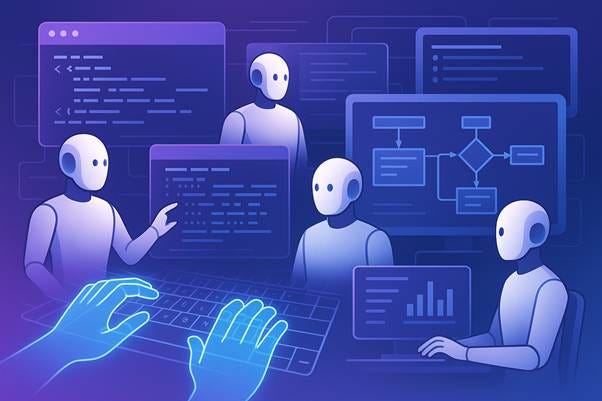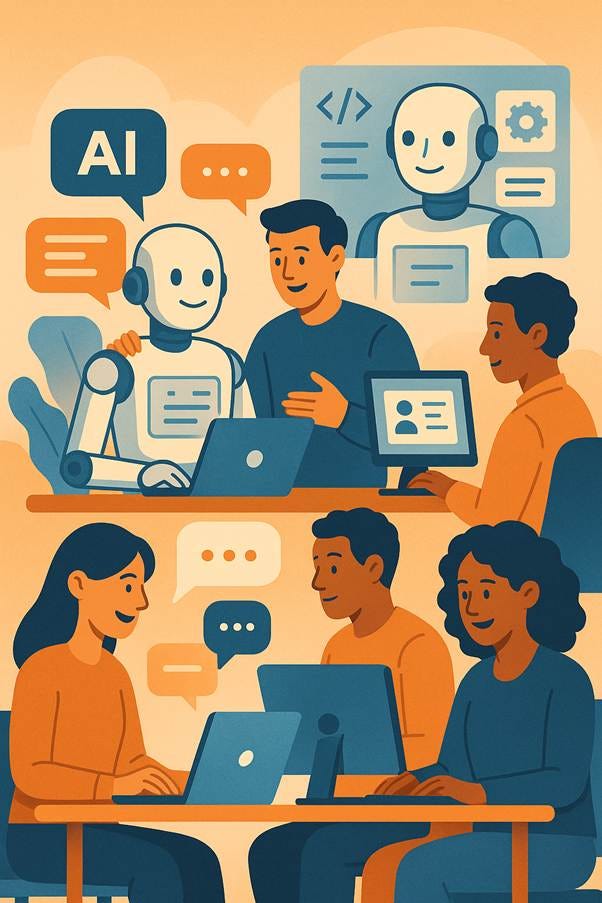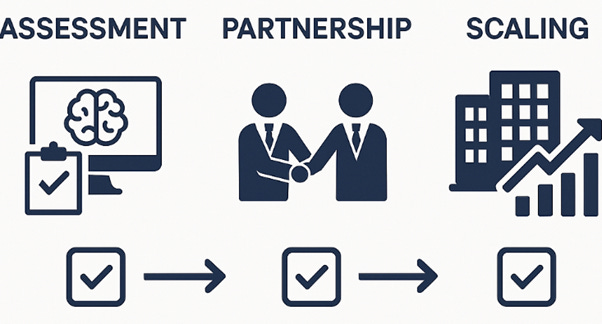
Executive Summary
Last week in AI there has been an extensive infrastructure investment and research model enhancements. OpenAI signed a multi-billion-dollar chip deal with AMD to ramp its operations, while Google launched Gemini 2.5, which allows AI agents to execute computing tasks in the physical world, such as web browsing. All of this highlights the rapidly increasing race for AI-dominance, presenting opportunities for businesses to explore agentic AI for automation purposes, and poses challenges with energy needs of large-scale deployment as well as potential bubbles in the sector.
Strategically, businesses must prepare for AI’s shift from experimental tools to core infrastructure, trying to balance rapid adoption with ethical considerations and ROI scrutiny to avoid overhyping unproven technologies.
Strategic Analysis
OpenAI’s AMD Chip Deal and the AI Infrastructure Boom
This week’s standout development was OpenAI’s agreement with AMD for up to 6 GW of GPU capacity, involving billions in chips and potential equity stakes, as part of broader trillion-dollar infrastructure plans. This move addresses the escalating demand for compute power amid AI’s growth, with similar efforts from Microsoft ($33B in AI cloud capacity) and NVIDIA’s surging chip sales illustrating the sector’s shift toward massive-scale hardware investments.
Business Impact Analysis:
Opportunities: Enterprises in tech, energy, and manufacturing can capitalize on the infrastructure gold rush. The AI data centres are driving 92% of U.S. growth and creating demand for specialized hardware, cooling systems, and renewable energy sources. This could boost revenues for suppliers like AMD and TSMC, whose AI-related sales soared 30%. However, it also favours incumbents with deep pockets which will potentially help widen the gap between Big Tech and smaller players.
Risks: Escalating energy consumption (e.g., 6 GW equates to powering millions of homes) raises sustainability concerns, while Wall Street’s demand for AI ROI proof signals potential bubble risks, as seen in Bank of England’s warnings. Too much excitement can lead to overinvestment without clear returns, consequently leading to market corrections, impacting stock valuations and funding for AI startups.
Market Shifts: The deal highlights a pivot from software-only innovation to hardware-integrated ecosystems, with geopolitical implications such as the U.S. restrictions on AI chips to China.
Implementation Framework: To leverage this opportunity you need to adopt a phased approach:
Assessment Phase (1-3 Months): Audit current compute needs and forecast AI workloads using tools like Azure AI or Google Cloud metrics to identify infrastructure gaps.
Partnership Phase (3-6 Months): Collaborate with providers like AMD or NVIDIA for custom GPU setups, starting with hybrid cloud models to minimize upfront costs.
Scaling Phase (6+ Months): Integrate AI ops tools for monitoring (e.g., AI observability platforms) and ensure compliance with emerging regulations like EU’s €1.1B AI sovereignty plan. Make sure you measure success via KPIs like compute efficiency gains (target 20-30% reduction in energy use) and ROI on AI projects.
Google’s Gemini 2.5 and the Rise of Agentic AI

Google released Gemini 2.5, featuring “computer use” capabilities that allow AI agents to autonomously navigate browsers, control devices, and perform tasks like debugging or data entry, alongside expansions for enterprise use. This builds on similar advances from OpenAI’s AgentKit and Anthropic’s Sonnet 4.5 with 1M token contexts, signalling that agentic AIs as in a maturation phase.
Business Impact Analysis:
Opportunities: Agentic AI can automate 30-50% of routine tasks in sectors like healthcare (e.g., personalized breast cancer screening) and finance, boosting productivity and enabling 24/7 operations. Tools like DeepMind’s CodeMender, can be used for vulnerability patching, reducing development time by up to 40%.
Risks: Security vulnerabilities, such as AI browsers leaking data or hallucinations in agents, pose threats. The same applies for ethical issues like job displacement (e.g., MrBeast’s concerns over creators). On the other hand, regulatory scrutiny, including Italy’s first national AI law, could slow deployment.
Market Shifts: This democratizes advanced AI, with integrations such as Grok Code in Visual Studio, is enhancing developer tools, but also intensifies competition among OpenAI, Google, and Anthropic.
Implementation Framework: Make sure you use a structured rollout:
Pilot Phase (1-2 Months): Test agents in low-risk areas, like automating reports with Gemini or Claude, using sandboxes to mitigate errors.
Integration Phase (2-4 Months): Embed into workflows via APIs (e.g., GPT-5 Pro), but ensure human oversight is present for critical decisions.
Optimization Phase (Ongoing): Train teams on AI literacy and make sure you monitor for biases. Scale based on metrics like task completion rates (aim for 80% automation accuracy).
Action Items
Conduct an AI Infrastructure Audit: Within the next month, evaluate your organization’s compute and data centre needs against benchmarks from recent deals like OpenAI-AMD; partner with cloud providers to secure scalable resources and avoid bottlenecks.
Pilot Agentic AI Tools: Select 1-2 processes (e.g., customer support or code review) and deploy tools like Gemini 2.5 or AgentKit for a 3-month trial, measuring efficiency gains and iterating based on feedback.
Invest in AI Governance: Develop internal policies aligned with emerging regulations (e.g., EU AI plan). Include ethics training for teams and ROI tracking dashboards to justify investments amid bubble concerns.
Explore Healthcare AI Applications: Leverage breakthroughs like AI-driven diagnostics or depression prediction by integrating models into R&D, starting with partnerships like AstraZeneca’s $555M AI drug initiative for faster innovation.
Monitor Geopolitical Risks: Track U.S.-China AI tensions and diversify suppliers to mitigate chip shortages, while advocating for inclusive policies like India’s AI Mission to tap global talent.
Executive Insight

AI’s promise often clash with integration hurdles. Teams resist change, data silos persist, and hype outpaces delivery. The result could be disillusionment.
The solution lies in treating AI as a cultural shift. This means you need to start small with cross-functional pilots to build buy-in, prioritize transparent ROI metrics to counter bubble fears, and foster ethical guardrails early to avoid regulatory pitfalls.
Ultimately, as I mentioned many times, success hinges on human-AI collaboration. I cannot reiterate enough that we need to view these tools as amplifiers and not as replacements. Only then will we unlock sustainable growth without alienating your workforce.


